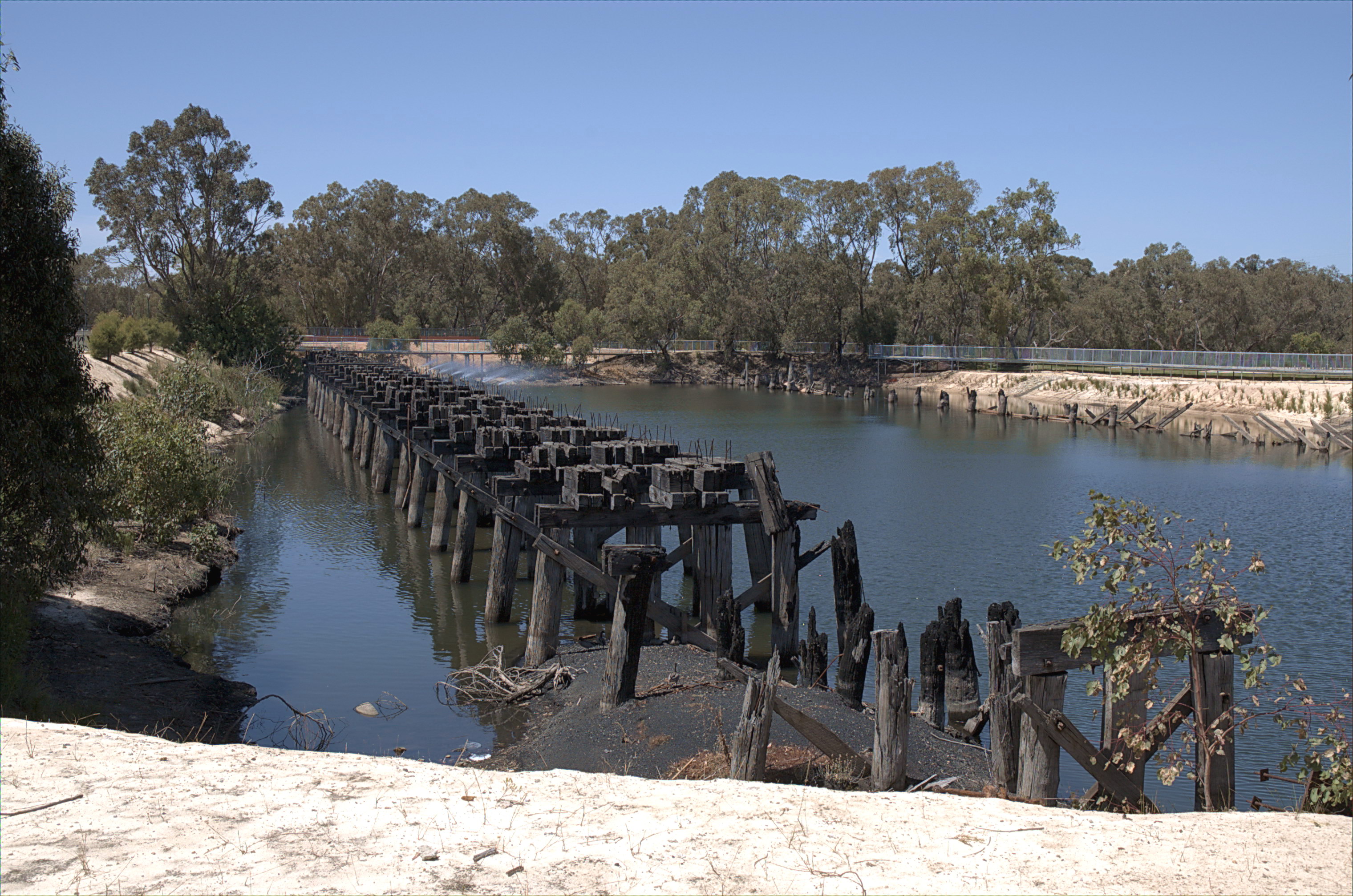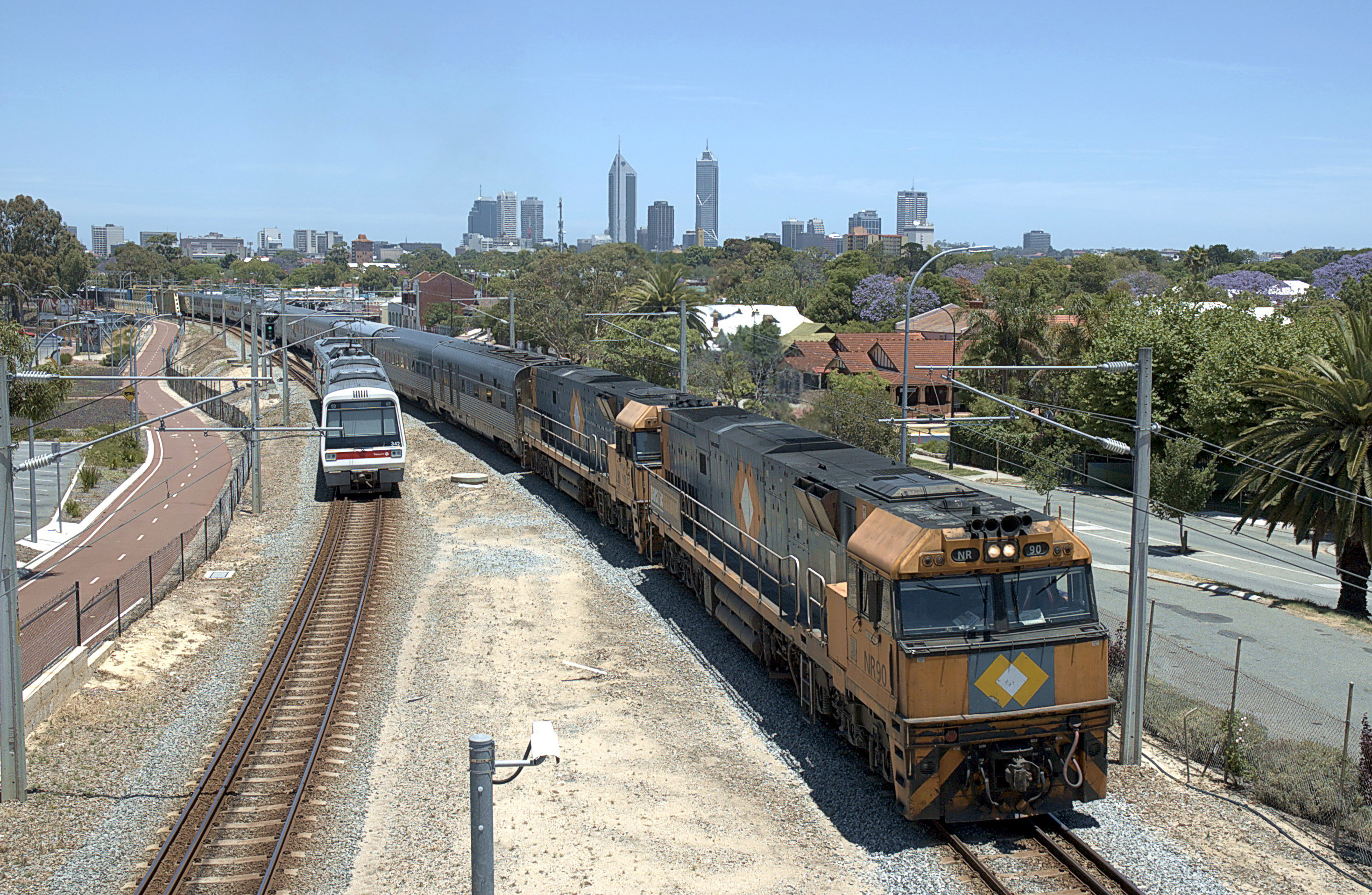|
WAGR J Class
The WAGR J class was a three-member class of 4-6-0 steam locomotives operated by the Western Australian Government Railways (WAGR) between 1892 and 1924 before seeing further use with the State Saw Mills until the early 1930s. History The J class engines were built in 1891 by Kitson & Co, Leeds, for the Fremantle to Beverley mail service. They arrived in Western Australia in late 1891 and entered service with the WAGR early the following year. However their fireboxes proved too small and in 1907 they were fitted with Q class boilers. All three engines were withdrawn in January 1924. They were transferred to the State Saw Mills to haul timber trains and after repairs at the Midland Railway Workshops, J28 arrived at Wuraming in November 1924, J29 at Manjimup in May 1925 and J30 at Holyoake. All were out of use by the early 1930s, and later scrapped. Namesake The J class designation was reused in the 1960s when the J class diesel locomotives entered service. See also *Rail ... [...More Info...] [...Related Items...] OR: [Wikipedia] [Google] [Baidu] |
Midland Railway Workshops
The Midland Railway Workshops in Midland, Western Australia, were the main workshops for the Western Australian Government Railways (WAGR) for over 80 years. History The first railway workshops in Western Australia were located at Fremantle and shifted to Midland in 1904. The Midland Railway Workshops were involved with all WAGR rolling stock and engine construction and maintenance. Steam engines continued to operate on mainline service until 1971, and all major maintenance occurred at the workshops. Workforce Generations of workers at the workshops had considerable numbers of European migrants who arrived in Australia with limited English language, and there were significant groups of Italian migrants in the workforce. The workforce of the workshops had a rich history and, since closing, there have been projects to record oral history and collect information about the place and people involved. Closure In April 1993, the Richard Court Liberal State Government announced tha ... [...More Info...] [...Related Items...] OR: [Wikipedia] [Google] [Baidu] |
Steam Locomotives Of Western Australia
Steam is a substance containing water in the gas phase, and sometimes also an aerosol of liquid water droplets, or air. This may occur due to evaporation or due to boiling, where heat is applied until water reaches the enthalpy of vaporization. Steam that is saturated or superheated is invisible; however, "steam" often refers to wet steam, the visible mist or aerosol of water droplets formed as water vapor condenses. Water increases in volume by 1,700 times at standard temperature and pressure; this change in volume can be converted into mechanical work by steam engines such as reciprocating piston type engines and steam turbines, which are a sub-group of steam engines. Piston type steam engines played a central role in the Industrial Revolution and modern steam turbines are used to generate more than 80% of the world's electricity. If liquid water comes in contact with a very hot surface or depressurizes quickly below its vapor pressure, it can create a steam explosion. Types ... [...More Info...] [...Related Items...] OR: [Wikipedia] [Google] [Baidu] |
Railway Locomotives Introduced In 1892
Rail transport (also known as train transport) is a means of transport that transfers passengers and goods on wheeled vehicles running on rails, which are incorporated in tracks. In contrast to road transport, where the vehicles run on a prepared flat surface, rail vehicles (rolling stock) are directionally guided by the tracks on which they run. Tracks usually consist of steel rails, installed on sleepers (ties) set in ballast, on which the rolling stock, usually fitted with metal wheels, moves. Other variations are also possible, such as "slab track", in which the rails are fastened to a concrete foundation resting on a prepared subsurface. Rolling stock in a rail transport system generally encounters lower frictional resistance than rubber-tyred road vehicles, so passenger and freight cars (carriages and wagons) can be coupled into longer trains. The operation is carried out by a railway company, providing transport between train stations or freight customer facili ... [...More Info...] [...Related Items...] OR: [Wikipedia] [Google] [Baidu] |
Kitson Locomotives , fashion boutique with stores in Los Angeles, California, United States
Kitson may refer to: People with the surname Kitson: * Kitson (surname) Other * Kitsonville, West Virginia, an unincorporated community, United States * Kitson & Co., locomotive builders * Kitson Meyer, an articulated locomotive * Kitson (store) Kitson is an upmarket department store chain whose head store is on Robertson Boulevard in Los Angeles. This store is a well-known place for celebrity spotting, especially by paparazzi. Company See also * Kittson (other) {{disambig ...[...More Info...] [...Related Items...] OR: [Wikipedia] [Google] [Baidu] |
List Of Western Australian Locomotive Classes
This is a list of Western Australian locomotive classes, being classes of locomotive that have worked on railways in Western Australia. The majority of Western Australian steam locomotive classes were operated by the Western Australian Government Railways (WAGR). Regularly scheduled steam working ceased on WAGR mainline operations after 1971 - with only special excursion or enthusiasts trains being hauled by steam after that time. Other significant operators include the Commonwealth Railways, the Midland Railway Company of Western Australia and State Saw Mills. Many private organisations also operated steam locomotives in Western Australia. Locomotives Western Australian Government Railway Midland Railway Company of Western Australia (In order of introduction on the Midland railway.) Commonwealth Railways Other Diesel locomotives BHP (In order of introduction on the Goldsworthy and Mount Newman railways.) * CM39-8 * CM40-8M * CM40-8 * GE AC6000CW * EMD S ... [...More Info...] [...Related Items...] OR: [Wikipedia] [Google] [Baidu] |
Rail Transport In Western Australia
Railways in Western Australia were developed in the 19th century both by the Government of Western Australia and a number of private companies. Today passenger rail services are controlled by the Public Transport Authority (a department of the Government of Western Australia) through Transperth, which operates public transport in Perth, and Transwa, which operates country passenger services. Great Southern Rail operates the ''Indian Pacific''. The interstate standard gauge line east from Kalgoorlie is owned by the Australian Rail Track Corporation, with most other lines leased by the state to Arc Infrastructure. Freight rail was privatised in 2000. General intrastate freight is mainly operated by Aurizon, while grain traffic is also operated by Aurizon under contract to the CBH Group. Interstate traffic is operated by Pacific National and SCT Logistics. Aurizon also operate an interstate mineral sands service to Kwinana from Broken Hill for Tronox. A number of private iron or ... [...More Info...] [...Related Items...] OR: [Wikipedia] [Google] [Baidu] |
WAGR J Class (diesel)
The J class are a class of diesel locomotives built by Clyde Engineering, Granville, for the Western Australian Government Railways in 1966. History The J class entered service between July and October 1966 to provide as shunters for the Eastern Goldfields Railway from Perth to Kalgoorlie that was being converted to standard gauge. They were a development of the Victorian Railways Y class. J101 was scrapped in July 1986 with the remaining four sold in 1995 to Great Northern Rail Services and moved to South Dynon Locomotive Depot. They operated freight transfer and infrastructure trains under contract to National Rail. Following the cessation of Great Northern Rail Services in 2004, the 4 units were split up. J102 & J103 were sold to CFCLA and stayed in Melbourne. These 2 units were hired to Southern Shorthaul Railroad for use as terminal shunters and infrastructure workings. J102 & J103 were purchased by SCT Logistics for use as shunters at their various terminals. J1 ... [...More Info...] [...Related Items...] OR: [Wikipedia] [Google] [Baidu] |
WAGR Q Class (1895)
The WAGR Q class was a six-member class of 4-6-2T tank engine steam locomotives operated by the Western Australian Government Railways (WAGR) between 1896 and 1925. History In April 1896, the WAGR placed an order with R&W Hawthorn Leslie & Co for four 4-6-2T locomotives. Meanwhile, the builder had two very similar locomotives that had been built in 1895 for the Portos e Caminhos de Ferro de Moçambique, Mozambique as part of a cancelled order. A deal was done in May 1896 for the WAGR to purchase them and they entered service in August 1896. The other four entered service in 1896/97. The 1895 built locomotives had different shaped cab windows and side tanks. They were employed as shunters at Fremantle and Midland. In 1905, Q140 was rebuilt with a new boiler and converted to 4-6-4T configuration with water and coal capacity increased to make it suitable to operate on the Upper Darling Range Railway, Q141-Q143 followed in 1909. They were reclassified as the Qa class. They opera ... [...More Info...] [...Related Items...] OR: [Wikipedia] [Google] [Baidu] |
Kitson And Company
Kitson and Company was a locomotive manufacturer based in Hunslet, Leeds, West Yorkshire, England. Early history The company was started in 1835 by James Kitson (businessman), James Kitson at the Airedale Foundry, off Pearson Street, Hunslet, with Charles Todd as a partner. Todd had been apprenticed to Matthew Murray at the Round Foundry in Holbeck, Leeds. Initially, the firm made parts for other builders, until it was joined in 1838 by David Laird, a wealthy farmer who was looking for investments, and the company became Todd, Kitson and Laird. That year saw the production of the company's first complete locomotives, either for the North Midland Railway, North Midland or the Liverpool and Manchester Railway. However, Todd left almost immediately to form Railway Foundry, Shepherd and Todd, and the company was known variously as Kitson and Laird or Laird and Kitson. The order for six engines by the Liverpool and Manchester began with ''LMR 57 Lion, Lion'', which still exists. A ... [...More Info...] [...Related Items...] OR: [Wikipedia] [Google] [Baidu] |
Firebox (steam Engine)
In a steam engine, the firebox is the area where the fuel is burned, producing heat to boil the water in the boiler. Most are somewhat box-shaped, hence the name. The hot gases generated in the firebox are pulled through a rack of tubes running through the boiler. Steam locomotive fire tube firebox In the standard steam locomotive fire-tube boiler, the firebox is surrounded by water space on five sides. The bottom of the firebox is open to atmospheric pressure, but covered by fire grates (solid fuel) or a firing pan (liquid fuel). If the engine burns solid fuel, like wood or coal, there is a grate covering most of the bottom of the firebox to hold the fire. An ashpan, mounted underneath the firebox and below the grates, catches and collects hot embers, ashes, and other solid combustion waste as it falls through the grates. In a coal-burning locomotive, the grates may be shaken to clean dead ash from the bottom of the fire. They are shaken either manually or (in larger locomotiv ... [...More Info...] [...Related Items...] OR: [Wikipedia] [Google] [Baidu] |



